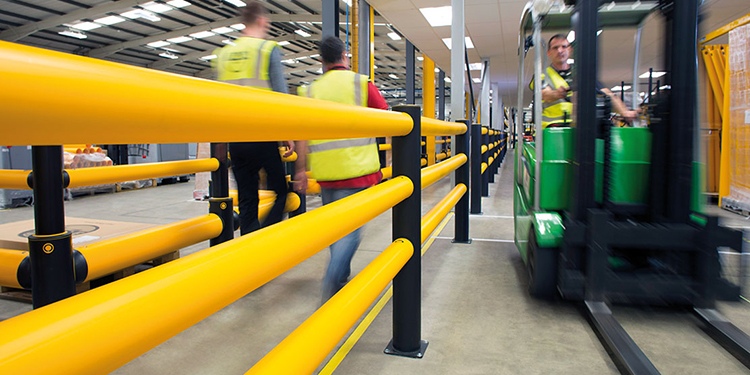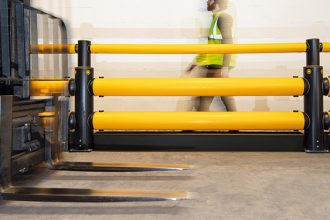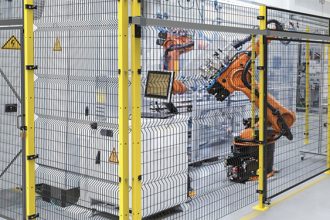How To Select The Right Guardrail For A Specific Application

Guardrails and other protective barriers are intended to improve safety in distribution centers, warehouses, or manufacturing facilities by creating a physical separation between personnel and hazards such as materials handling equipment or vehicles. They can also be used to protect inventory, structures, or assets against potential impacts from forklifts and their loads. It is therefore extremely important that the guardrail used is sufficiently strong to withstand the potential impact forces to which it might be subjected. In other words, the design and construction of the guardrail should be suitable for the weights and speeds of the vehicles in circulation within the facility. The most appropriate style and design of a guardrail is always the one that is fit for purpose; the one that can withstand an impact without failing.
Given the wide variety of applications for guardrails, how can facility owners ensure that the guardrails they choose will not fail? The best way of ensuring peace-of-mind is by working with a qualified supplier of guardrail systems. They will specify the most appropriate guardrail for an application based on the answers to the following questions:
- What is the purpose of the guardrail? Will it be segregating vehicle routes from pedestrian traffic or protecting facility structures, inventory and equipment from potential impacts? There are a variety of protective barrier types. Knowing what the guardrail is intended to protect will help determine the most appropriate solution.
- What are the dimensions of the area where guarding is required? The available space in the area requiring protection will influence the design and construction of the overall guardrail system, including the width of the rails and the spacing of the support posts.
- Which types of vehicle operate in the area, and at what speeds? Knowing the maximum weight vehicles, their loads — as well as the maximum speed at which they are traveling — helps ensure that the design and construction of the system can withstand the energy of a potential impact.
- In what sort of environment will the guardrail will be installed? Are the temperature conditions ambient, cold storage, or freezer? Temperature and other environmental factors can affect the energy absorption and deflection properties of different materials such as polymers or steel.
- What are the potential heights and angles of impact? Knowledge of the height at which a vehicle or load may come into contact with a guardrail helps determine the optimum height for the overall guardrail installation. Further, different angles of impact will affect the amount of energy transferred to the guardrail during an impact.
The guardrail supplier will also provide information about various materials options. Different materials handle impact energy in different ways. A polymer system will absorb impact energy by temporarily flexing then returning to its original shape. Any impact energy remaining is then dispersed into the floor. Conversely, steel — which is very rigid — will try to resist an impact, before deforming and transferring remaining impact energy into the floor. Both types offer advantages and disadvantages that a supplier can explain in relation to the given application.
Looking for more information about guardrails and protective barriers? The members of the Protective Guarding Manufacturers Association (ProGMA) are available for guidance and recommendations.



